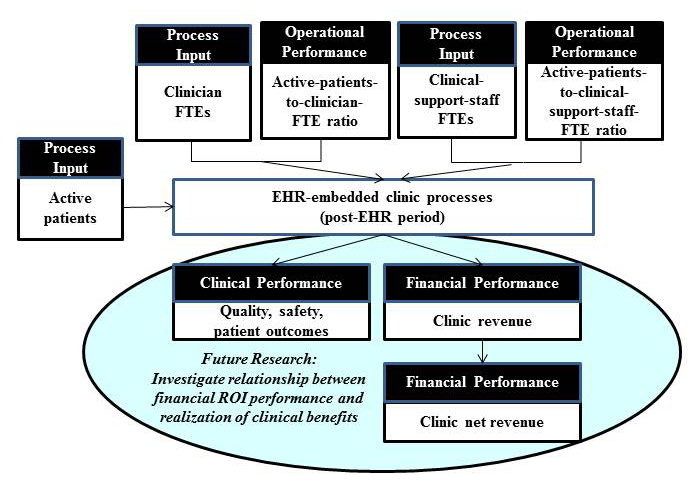Difference between revisions of "Template:Article of the week"
Shawndouglas (talk | contribs) (Updated article of the week text.) |
Shawndouglas (talk | contribs) (Updated article of the week text.) |
||
| Line 1: | Line 1: | ||
<div style="float: left; margin: 0.5em 0.9em 0.4em 0em;">[[File: | <div style="float: left; margin: 0.5em 0.9em 0.4em 0em;">[[File:Fig5 Jang JMIRMedInfo2014 2-2.jpg|220px]]</div> | ||
'''"[[Journal: | '''"[[Journal:Return on investment in electronic health records in primary care practices: A mixed-methods study|Return on investment in electronic health records in primary care practices: A mixed-methods study]]"''' | ||
The use of [[electronic health record]]s (EHR) in clinical settings is considered pivotal to a patient-centered health care delivery system. However, uncertainty in cost recovery from EHR investments remains a significant concern in primary care practices. | |||
Guided by the question of “When implemented in primary care practices, what will be the return on investment (ROI) from an EHR implementation?”, the objectives of this study are two-fold: (1) to assess ROI from EHR in primary care practices and (2) to identify principal factors affecting the realization of positive ROI from EHR. We used a break-even point, that is, the time required to achieve cost recovery from an EHR investment, as an ROI indicator of an EHR investment. Given the complexity exhibited by most EHR implementation projects, this study adopted a retrospective mixed-method research approach, particularly a multiphase study design approach. For this study, data were collected from community-based primary care clinics using EHR systems. ('''[[Journal:Return on investment in electronic health records in primary care practices: A mixed-methods study|Full article...]]''')<br /> | |||
<br /> | <br /> | ||
''Recently featured'': [[Journal:Unravelling the tangled taxonomies of health informatics|Unravelling the tangled taxonomies of health informatics]], [[American National Standards Institute | ''Recently featured'': [[Journal:Use of handheld computers in clinical practice: A systematic review|Use of handheld computers in clinical practice: A systematic review]], [[Journal:Unravelling the tangled taxonomies of health informatics|Unravelling the tangled taxonomies of health informatics]], [[American National Standards Institute]] | ||
Revision as of 15:54, 10 August 2015
"Return on investment in electronic health records in primary care practices: A mixed-methods study"
The use of electronic health records (EHR) in clinical settings is considered pivotal to a patient-centered health care delivery system. However, uncertainty in cost recovery from EHR investments remains a significant concern in primary care practices.
Guided by the question of “When implemented in primary care practices, what will be the return on investment (ROI) from an EHR implementation?”, the objectives of this study are two-fold: (1) to assess ROI from EHR in primary care practices and (2) to identify principal factors affecting the realization of positive ROI from EHR. We used a break-even point, that is, the time required to achieve cost recovery from an EHR investment, as an ROI indicator of an EHR investment. Given the complexity exhibited by most EHR implementation projects, this study adopted a retrospective mixed-method research approach, particularly a multiphase study design approach. For this study, data were collected from community-based primary care clinics using EHR systems. (Full article...)
Recently featured: Use of handheld computers in clinical practice: A systematic review, Unravelling the tangled taxonomies of health informatics, American National Standards Institute










